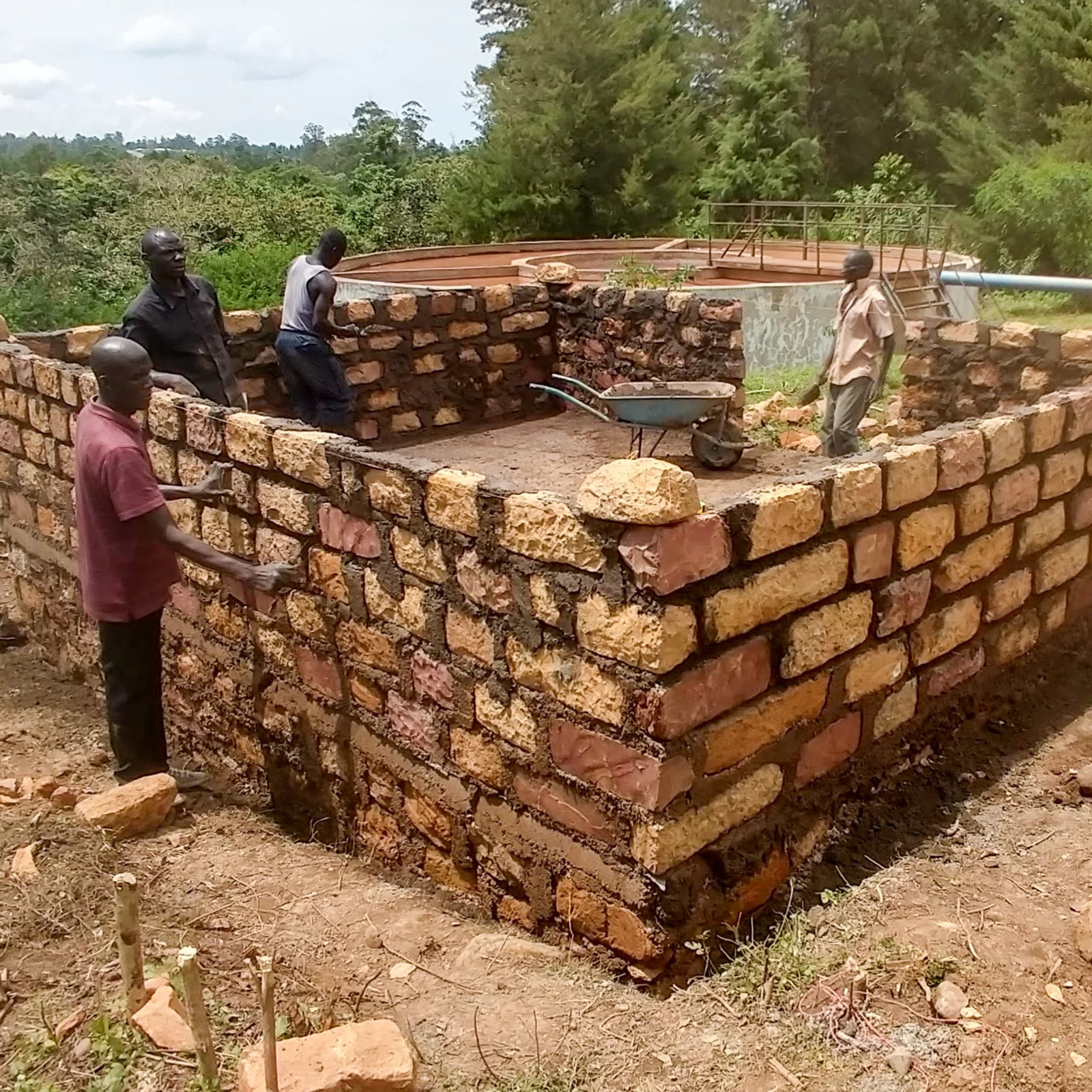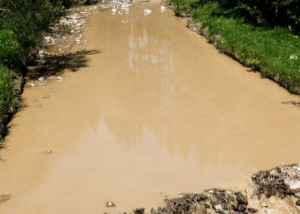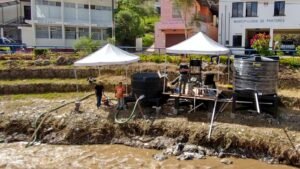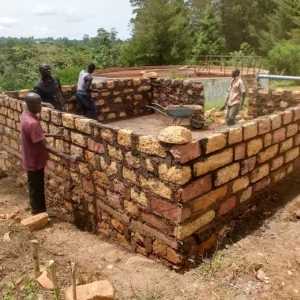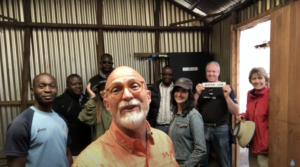the BBUV in Kenya
In 2019, we had the opportunity to test our ideas for large-volume clean water solutions. Our successes from the “System Testing in Guatemala” spurred the interest of World Vision Kenya (WV-K) via Business Connect – a global distributor of clean water solutions. WV-K has a pilot program underway, and they saw our system concept as a possible solution to help them achieve their goals.

The Situation:
Initiated in 2015, WV-K is taking water from the Awatch River in the Dol Kodera Forest in Homa Bay County, Kenya, with the focused goal of providing water for 100,000+ people in this region . The water, harvested via river pressure and moved with gravity in an 8″ pipe, brings the water to the purification complex approximately 800-900 meters from the inlet to the filter station.
The system components at this location include a chemical injection station, a flocculation track, settling tanks, a wash tank, and a clean water tank. This treatment facility utilizes the chemical Alum to weight the undissolved solids in the water, causing the particulates to settle at the bottom in the water tanks and the cleaner water to rise to the surface. After the Centrifuge and then chlorination, this water then distributes to the network, which, when finished, will stretch across 27 kilometers, making the water available via water kiosks. The current treatment method uses an average of 80kg of Alum per day (60 to 100kg) at the cost of $ 59 USD per day.
They hoped to use our highest volume version of the BlackBox Series filtration system, the BBUV, to eliminate their current chemical injection treatment process for this project and future projects.


The Application:
The challenge was to increase the filtration capacity of a single BBUV unit and meet the desired volume of 83m3 (Cubic Meters) per hour or 1,992m3 per day.
Amplifying the design of our BlackBox High Volume unit to a 1″ architecture, we better than doubled the throughput from a base of 32 LPM (10 GPM) to as much as 113 LPM (30 GPM). The BBUV unit’s key feature, beyond its filtration capacity, is the reconfigurability to function in parallel as a group of filters – effectively increasing its volume capacity to filter water. In our testing, we had seen on the high end as much as 113 LPM (30 GPM) at 20 PSI; and on the low end, 90 LPM (24 GPM) at 40 PSI move through a single filter of our design.
Two banks – 6 unit BBUV systems were introduced into their purification system to achieve WV-K’s desire for 83m3 or 1,992m3 per day requires 1,383 LPM. Each bank has the potential capacity to process 678 LPM * 2 units and meets a possible flow rate of 1,356 LPM. This variance was within the margin of success at the time of committing to the project.
Late Discoveries:
After the project commitments, we became aware of a few critical details.
- The water pressure in the 8″ tube from the river was only 8 meters of head pressure (nominally 13 PSI). The lower pressure meant the BBUVs would have less pressure to work with compared to the testing in our shop. The good news for us was that this assured pressure regulation is not needed to protect the filter’s fibers.
- The final location of the bacterial filters was directly off the river and not after any method to reduce the turbidity of the river.
- WV-K built a building to accommodate the 2 – banks of BBUVs units. Using two – 4″ supply lines, the 8″ pipe is fed into each of the respective banks of BBUV units, bypassing the existing facilities. These supply lines run from points before the chemical injection and then connect after the settling tanks.



The Results:
The development of the BBUV filters, was the first system of its size placed in active operation. The results were varied, both less than favorable and favorable.
Less than favorable results:
- Based on our conceptual designs and testing, we went with a plan using 4″ PVC tubing for the filter housings to maximize the flow rate of the filters themselves. This design was not as easy to service in field use as it was in our shop.
- The PVC Schedule 40 material available in the western hemisphere is not the same as what is available outside this hemisphere. This detail forced us to make creative solutions for minor repairs needed due to the import process. Transforming from one PVC format to another became another obstacle to work around. In the future, it will be best to utilize flange fittings to unify the two PVC formats.
- The head pressure of 8 meters (nominally 13 PSI) was inadequate to push the amount of water needed through the two lines and meet the desired volume of 83m3 per hour.
- The turbidity of the river is too high for only the micro filters to clean up. Their strength is removing particulates down to .1 microns. The filters perform optimally when the incoming turbidity is 50 NTU or less.






- The capacity of the BBUV is proven to remove turbidity and bacteria on a community scale. Even with the high levels of turbidity causing mud to overwhelm the filters and the lower head pressure of nominally 13 PSI, the system did achieve a nominal equivalency of 400m3 per day.
- The high turbidity could be mitigated to some extent with more frequent back flushing. But while additional back flushing can address part of the increases in turbidity, there is a balance between the practical amount of cleaning cycles and expending more water than is gained. External pressurized back flushing tanks may help clean the filters in the event of an excessively turbulent environment. However, the efficient use of the technology would be to place an in-line method for reducing the turbidity to less than 50 NTU before the BBUV units.
- To increase the river pressure to meet demand, additional banks of units to offset the lower PSI coming from the river should increase the volume to reach the desired amount of 80m3 per hour.
- The current PVC design proved to be problematic in maintenance. We (Better Things) plan to improve the BBUV system’s filter housings for more straightforward installation and easier servicing. This upgrade will include an enclosure for each unit and quicker access to the filter units. These steps will take us closer to reaching some of our other goals, such as modular assembly kits for global accessibility, easier mounting of the BBUV units, and a more definitive branding of the look of our product.


theBlackBox Series water filtration systems produce clean water. They are practical for various applications, including cleaning wells or municipal water systems, purifying natural water sources such as lakes and rivers, and using them in industries such as agriculture, fish farming, and potable water supply.
We will continue to test our units on-site in Guatemala, Kenya, and other locations.
